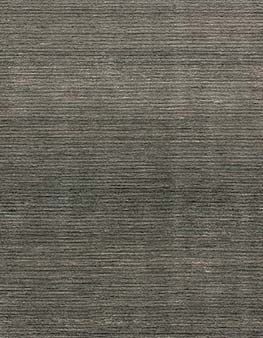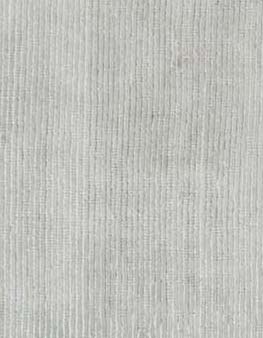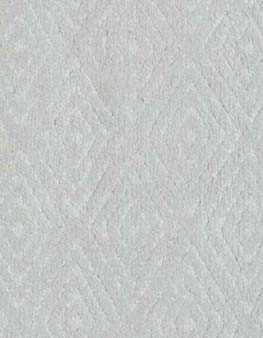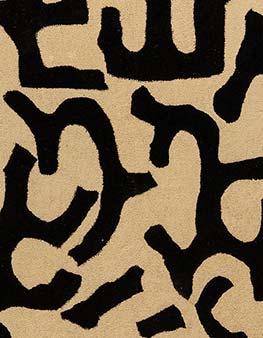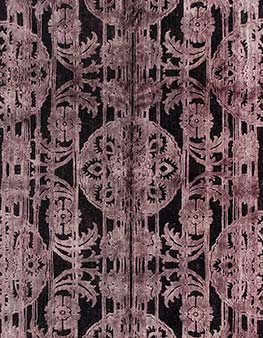What is a Tufted Rug?
 Hand-tufted rugs reflect a wide variety of styles, from traditional to state-of-the-art. Made using a special technology that facilitates the production process, these carpets give you the opportunity to change the look of your interior more frequently than much more costly hand-woven or knotted rugs.
Hand-tufted rugs reflect a wide variety of styles, from traditional to state-of-the-art. Made using a special technology that facilitates the production process, these carpets give you the opportunity to change the look of your interior more frequently than much more costly hand-woven or knotted rugs.
The world of interior design changes rapidly as new trends come and go. Keeping up with all those novelties is challenging, especially considering how much time it takes to make a single rug by hand. However, tufted rugs manage to keep up. What is their secret? To create a hand-tufted rug, first, the designer needs to draw the pattern on the canvas base, stretched on a frame. Then, a tufting gun is used to shoot yarn through the fabric and upon completion, the loops of yarn are secured using latex glue at the back and cut and the front, creating a soft pile. The yarn is then cut and shaved to ensure equal height. In the case of rugs with different height volumes, the surfaces are cut by hand with special angled scissors. This technique allows skilled artisans to create curved patterns and a pile of different heights and densities.
While hand-knotting a carpet can take several months to complete, a hand-tufted rug can be made in a day.
Looking at stunning designs of hand-tufted rugs one could think that making them requires a lot of time and effort. Surprisingly enough, that is not the case!
Hand-tufted Rugs in Your Home
Because creating a hand-tufted rug is less time-consuming and expensive, some people consider them to be of inferior quality, compared to hand-knotted rugs. However, that does not have to be the case. As in the case of all rugs, their longevity depends on the skill of the artisan and materials used during the process of tufting. In general, hand-tufted rugs can last you from ten to twenty years, provided that they are properly taken care of.
Most of the hand-tufted rugs at Doris Leslie Blau are made using the highest quality natural fibers, such as silk or cotton, among many others. This makes our hand-tufted rugs especially desirable for those who value both beauty and utility of hand-tufted rugs.
A tufted rug can fit multiple styles, thanks to their diverse designs and color palettes. Hand-tufted carpets are a great alternative for hand-knotted carpets. Equally beautiful, but less costly, they will be a perfect choice for those, who want to follow trends or like frequent changes. The great diversity of hand-tufted rugs will please even the most demanding connoisseurs.
How to Choose a Hand-tufted Rug?
As explained above, hand-tufted rugs are made differently than knotted rugs or woven rugs. They are not woven, there are no knots, only tufts punched through the canvas base using a tufting gun. The production process is largely facilitated which is an advantage and a disadvantage at the same time. On the one hand, the technique allows less experienced artisans to make beautiful hand-tufted rugs. On the other hand, it poses a threat to conscious consumers who want top-quality products – they may come across many flawed specimens that may look fine at first sight but in reality, are much less durable than the ones from a reliable purveyor.
Here, the devil really lies in the details. Choosing a perfect hand-tufted rug, one must pay close attention to the quality of yarn and backing. It is worth running your hand through the pile to check if it is strong, thick, resilient and if the strands of yarn don’t shed easily.
All in all, for a layman in the subject of textiles, it is hard to determine if a hand-tufter rug is good or not. The best one can do is to go to a trusted dealer and rely on him in the matter of choosing a dream hand-tufted rug. Although the lifespan of hand-tufted rugs is way shorter than that of knotted or woven rugs, it is still worth seeking top-notch quality to ensure your hand-tufted rug is the warmth bringer and a fashion statement that is supposed to be.
How to Make a Hand-tufted Rug?
The process of making a hand-tufted rug starts with stretching a base (canvas) on a frame. Then, the artisan punches strands of yarn, typically wool, into the canvas using a tufting gun to create the pile and the pattern. When the “piling” is done, the rug is removed from the frame and a scrim fabric is glued to its back. If a craftsman wants a fringe to complete the design, he or she has to either glue or sew it to the rug’s edges. After all this, a hand-tufted rug is ready to adorn your space.
How to Make a Hand-knotted Rug?
The weaving of hand-knotted rugs is much more complex and time-consuming than making of hand-tufted rugs. The very weaving is done manually, however, instead of a frame, you need a loom. On the loom, the warp threads run vertically and become the rug fringe. The weft threads run horizontally and create the selvages of the rug – the edges that hold the rug together. When the loom is threaded, the weft threads weave in and out of the warp threads, and this creates the foundation of the rug. The wool or silk strands are tied by the artisan to the warp threads, then cut, knotted, and tightened. It takes an expert weaver about two seconds to make each knot or an hour to make about a thousand knots.
The quality of a hand-knotted rug can be determined by the number of knots per square inch (KPSI).
Obviously, the higher knot density, the better, as it translates to higher durability, the intricacy of the pattern and overall quality. The number of knots per square inch can start at 40 knots and go up as high as 2000 knots. A good rug will have about 160 knots per square inch, a 400 knots-per-square-inch rug is remarkable, and 1000 knots and up are exceedingly rare and expensive.
What’s the Difference Between Hand-knotted and Hand-tufted Rugs?
Everyone knows that the best rugs are made by hand, yet, this may mean many different things depending on the chosen technique. There is a lot of confusion in the subject regarding the construction of various rug types. To clear things up a bit, we will explain what are hand-knotted and hand-tufted rugs.
Technically, both types of carpets are made by hand, however, a hand-tufted rug requires something more than just artisan’s fingers. It is made using a special tool called a ‘tufting gun.’ Although its name sounds a bit daring and its appearance may initially intimidate a traditionalist, a tufting gun shoots only with bullets of artistic expression. Let us tell you about hand-knotted and hand-tufted rugs so you may easily differentiate between them and pick the one that meets your needs to the fullest.
How to Distinguish Between a Hand-knotted and a Hand-tufted Rug?
To recognize the type of carpet, simply look at its back. If no knots are visible, just a smooth scrim fabric, you’re holding a hand-tufted rug. If, on the other hand, you may actually see the reverse version of the front design rendered in tiny knots, it is most certainly a hand-knotted rug. The fringe, if present, is also an excellent indicator. As mentioned before, in a hand-tufted rug, it will be sewn or glued to the back, whereas, in a hand-knotted rug, the fringe constitutes an integral part of the construction.
A Hand-knotted or a Hand-tufted Rug – Which One to Choose?
Hand-knotted and hand-tufted rugs are quite different yet both equally desired by designers as each type has its unique advantages.
Hand-knotted rugs are generally much more tenacious – under proper maintenance, they may literally survive centuries. Partly because of that, they usually carry more traditional patterns(especially the vintage and antique ones). As a consequence of the long and arduous production process, hand-knotted rugs are also more costly.
In turn, a lifespan of a hand-tufted rug is approximately 10-20 years. Nevertheless, it isn’t necessarily a bad thing as it gives you a pretext and an opportunity to refurnish the décor. Because the production is much faster, hand-tufted rugs often have very fashionable or experimental designs. They are also relatively cheaper than knotted carpets.
All in all, to pick the rug type that is right for you, first, you have to ask yourself what kind of a decorator you are. If you follow trends and like frequent changes, it is advisable to look into hand-tufted rugs. Their relatively lower price, compared to hand-knotted carpets, and up-to-date designs give you the opportunity to always cover your floor with something in vogue. If, however, you are a follower of classic elegance, a hand-knotted rug will be a better choice. A hand-knotted rug is an investment but it will pay off in long years of flawless service and a qualitative touch to any space.
Taking Care of a Tufted Rug
Proper care is the key to the longevity of your hand-tufted rug. Frequent vacuuming, if done too harshly, can damage the pile, but is vital for any rug. Dirt and dust often accumulate in the pile, not only damaging it but also being hazardous to your health.
Fading colors is something we all want to avoid when buying a carpet. The best way to keep your hand-tufted rug safe is to reduce its exposition to sunlight. Put it in the shaded area, where it won’t be endangered. If you don’t want to or can’t do this, consider turning your carpet from time to time, so its colors will fade equally. It will look much better than a rug with uneven colorings.
Spills can be the end of any rug. Some liquids such as wine, juices or chemicals might be difficult to get rid of without professional help or special detergents. When you accidentally spill something on your hand-tufted carpet, the most important rule is to blot and not rub. Blotting will help you gently absorb part of the liquid while rubbing will smear it all over the pile.
